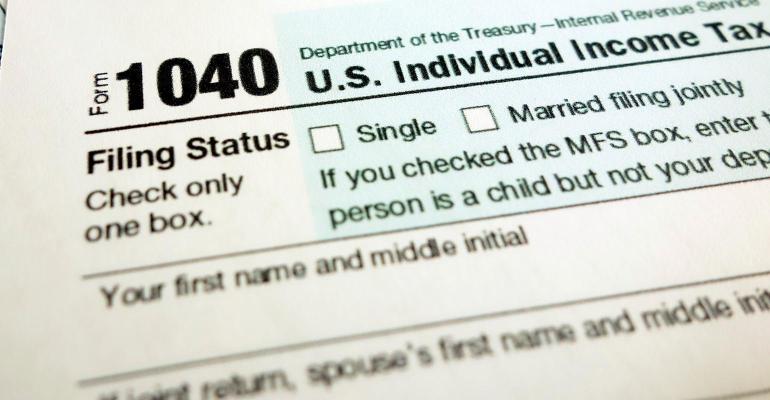For what seemed like an eternity, wealth advisors and fiduciaries grappled with leaning on any sort of regulatory certainty around digital assets when cautioning clients about risk. Finally, we’re seeing some sort of guidance emerging out of the smoldering remains of both cryptocurrency ecosystems and non-fungible tokens (NFTs), at least for collecting tax. Looked at from a broader perspective, the decision to both fund Internal Revenue Service enforcement and collect an estimated $50 billion USD worth of unreported crypto tax obligations shows, in fact, a deeper trend that isn’t necessarily taxation, but the federal government’s broader response to protect the sanctity of the U.S. dollar itself, as well as the U.S. banking system.
That move reflects a much clearer federal position and banking regulatory response just as a banking crisis erupts in those banks most concentrated in digital assets and virtual currency markets. In mid-March of this year, Silvergate Bank closed operations, as has Silicon Valley Bank. These events strengthen a return of vogue for the concept of risk management.
Both the new IRS Form 1040 and Instructions mark a significant semantical shift away from “virtual currency” to a much broader, more regulatorily integrated definition of “digital assets.” For planners, this definition’s importance transcends taxation. Rather, we’re beginning to see the very foundation of an integrated regulatory framework around this new asset class. This new term is included in two disparate areas, the Form 1040, its instructions and the Infrastructure Investment and Jobs Act (IIJA).
Digital Assets Defined
Here’s how the 1040 Form Instructions define the term “digital assets”:
“Digital assets are any digital representation of value that are recorded on a cryptographically secured distributed ledge or any similar technology. For example, digital assets include non-fungible tokens (NFTs) and virtual currencies, such as cryptocurrencies and stablecoins. If a particular asset has the characteristics of a digital asset, it will be treated as a digital asset for federal income tax purposes.”
Further, the IRS provided clarity on what constitutes a ‘financial interest’: “You have a financial interest in a digital asset if you are the owner of record of a digital asset, or have an ownership stake in an account that holds one or more digital assets, including the rights and obligations to acquire a financial interest, or you own a wallet that holds digital assets.” Taken together, the IRS likely has closed the loop on essentially unregulated lending in crypto liquidity pools by its inclusion of the phrase “rights ... to acquire a financial interest.”
By moving away from the term “virtual currency,” the IRS came much closer to the mark of clarifying its intent to impose taxation on the entire digital asset ecosystem. This now explicitly includes such terms as mining, staking, liquidity pooks and similar activities. When viewed together with the requirements included in the IIJA, the transaction and tax event history on virtual exchanges, and even NFT and DeFi marketplaces and protocols, will soon come from those entities directly to the taxpayer. This alone eases what’s been a large challenge for both accountants and the individual taxpayers themselves.
Key Risks
When the IRS talks about digital assets, the clear focus is on the cryptocurrency and NFT marketplaces. On Jan. 3, 2023, the three banking regulators in the United States — the Federal Reserve, the Office of the Comptroller of the Currency and the Federal Deposit Insurance Corporation — issued a joint statement warning banks of several of the “key risks” of the “virtual currency” asset class as a whole. Among those most prescient are:
- Inaccurate or misleading representations and disclosures by crypto-asset companies, including misrepresentations regarding federal deposit insurance and other practices that may be unfair, deceptive or abusive, contributing to significant harm to retail and institutional investors, customers and counterparties;
- Susceptibility of stablecoins to run risk, creating potential deposit outflows for banking organizations that hold stablecoin reserves;
- Contagion risk within the crypto-asset sector resulting from interconnections among certain crypto-asset participants, including through opaque lending, investing, funding, service and operational agreements. These interconnections may also present concentration risks for banking organizations with exposure to the crypto-asset sector; and
- Risk management and governance practices in the crypto-asset sector exhibiting a lack of maturity and robustness.
Risk Management
The parallel between this list and the increased interlocking and correct semantical terms from federal bodies like the IRS makes fiduciary decision-making easier in 2023. Taken in context with the broader political and market developments of 2022 as a whole, we begin to notice the trend toward conservative federal positioning around protection from systemic risks to the U.S. financial system itself. The global trend to “explore a central banking digital currency” has, at least for the foreseeable future, been put aside in favor of protecting the integrity and function of the U.S. dollar itself.
So often, speculative assets encourage peculation on a deep and wide scale, often not acknowledged until the critical mass of events forces a return to sobriety. The spectacular implosion of FTX in some ways makes the weather vane of the 2000s, Enron, look almost tame in comparison. While the term “digital assets” has several well-founded conceptual precedents like phantom income, intangible assets, trademarks, etc., virtual currency increasingly relates to tulips, consensual hallucination and falling knives.
For advisors and fiduciaries, having a sound and sober risk-management discussion with clients about digital assets, particularly crypto-based alternatives to government-backed currency, is at least easier in 2023. In some meaningful way, we have the IRS and the new Form 1040 to thank.





